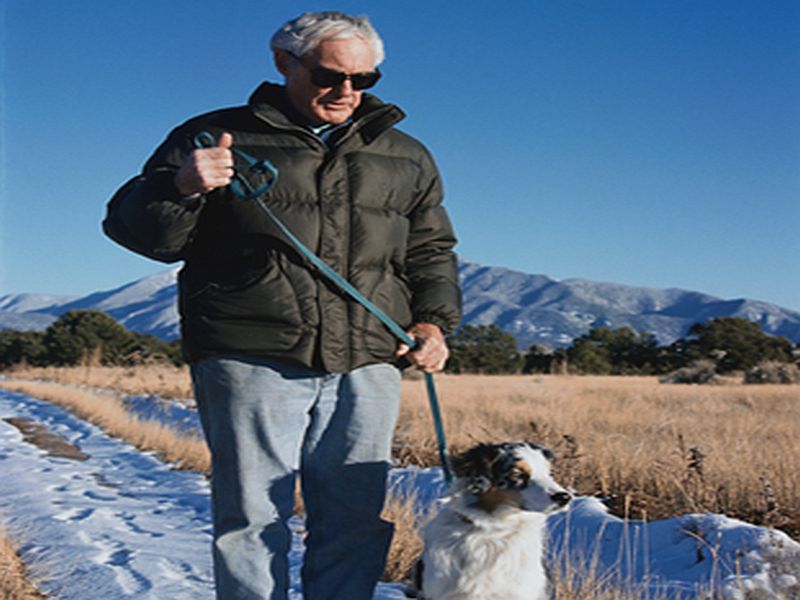Pooch Peril: More Elderly Are Fracturing Bones While Dog Walking

WEDNESDAY, March 6, 2019 (HealthDay News) -- Walking the dog can be great exercise for seniors, but there could be one downside: bone fractures.
Fractures suffered by elderly Americans while walking their dogs have more than doubled in recent years, new research shows.
Still, taking your dog for a walk can also bring big health rewards, one joint specialist said.
"Pets can provide companionship for older adults, and the physical exercise from regularly walking a dog may improve other aspects of physical and psychological health," said Dr. Matthew Hepinstall, who wasn't involved in the new study.
"So, the risks of walking a dog should be balanced against potential benefits," said Hepinstall, who helps direct joint surgery at Lenox Hill Hospital in New York City.
The new research was led by Kevin Pirruccio, a second-year medical student at the University of Pennsylvania. His team tracked national data and found that among people aged 65 and older, fractures associated with walking leashed dogs rose from about 1,700 cases in 2004 to almost 4,400 cases in 2017 -- a 163 percent rise.
More than three-quarters of the fractures occurred in women, with hip and arm fractures being the most common. About half of all fractures occurred in the upper body, with fractures of the wrist, upper arm, finger and shoulder leading the way.
The most common type of fracture was a broken hip (17 percent). That's cause for concern, Pirruccio's team said, because the death rate linked to hip fractures in people older than 65 is close to 30 percent.
The researchers added that the study only involved data on fractures treated at emergency departments. The actual number of dog walking-related injuries among seniors might even be higher if injuries not typically seen in a hospital -- for example, tendon or muscle tears -- were factored in.
Why the rising rates of fractures tied to dog walking? The study authors theorized that increased pet ownership and a greater emphasis on physical activity for older adults may be driving the trend.
In a university news release, Pirruccio stressed that walking your pooch each day "has repeatedly demonstrated social, emotional and physical health benefits." It's also "a popular and frequently recommended activity for many older Americans seeking new ways to stay active," he said.
On the other hand, "patients' risks for falls must be factored into lifestyle recommendations in an effort to minimize such injuries," Pirruccio said.
Hepinstall agreed.
"The take-home message for older adults and their families is that, when choosing to care for a pet, be sure to consider the strength and coordination of the older adult, and the size and expected behavior of the pet selected," he advised.
Pet ownership and care may need to be re-assessed with age, Hepinstall added.
"When the mobility of older adults changes, they should be encouraged to re-evaluate their ongoing ability to care for any pets," he said. "This will help ensure that the health and other needs of the adult and of the pet can be properly managed."
The study was published March 6 in JAMA Surgery.
More information
The U.S. National Institute of Arthritis and Musculoskeletal and Skin Diseases offers advice on preventing falls and fractures.

The news stories provided in Health News and our Health-E News Newsletter are a service of the nationally syndicated HealthDay® news and information company. Stories refer to national trends and breaking health news, and are not necessarily indicative of or always supported by our facility and providers. This information is provided for informational and educational purposes only, and is not intended to be a substitute for medical advice, diagnosis, or treatment.

